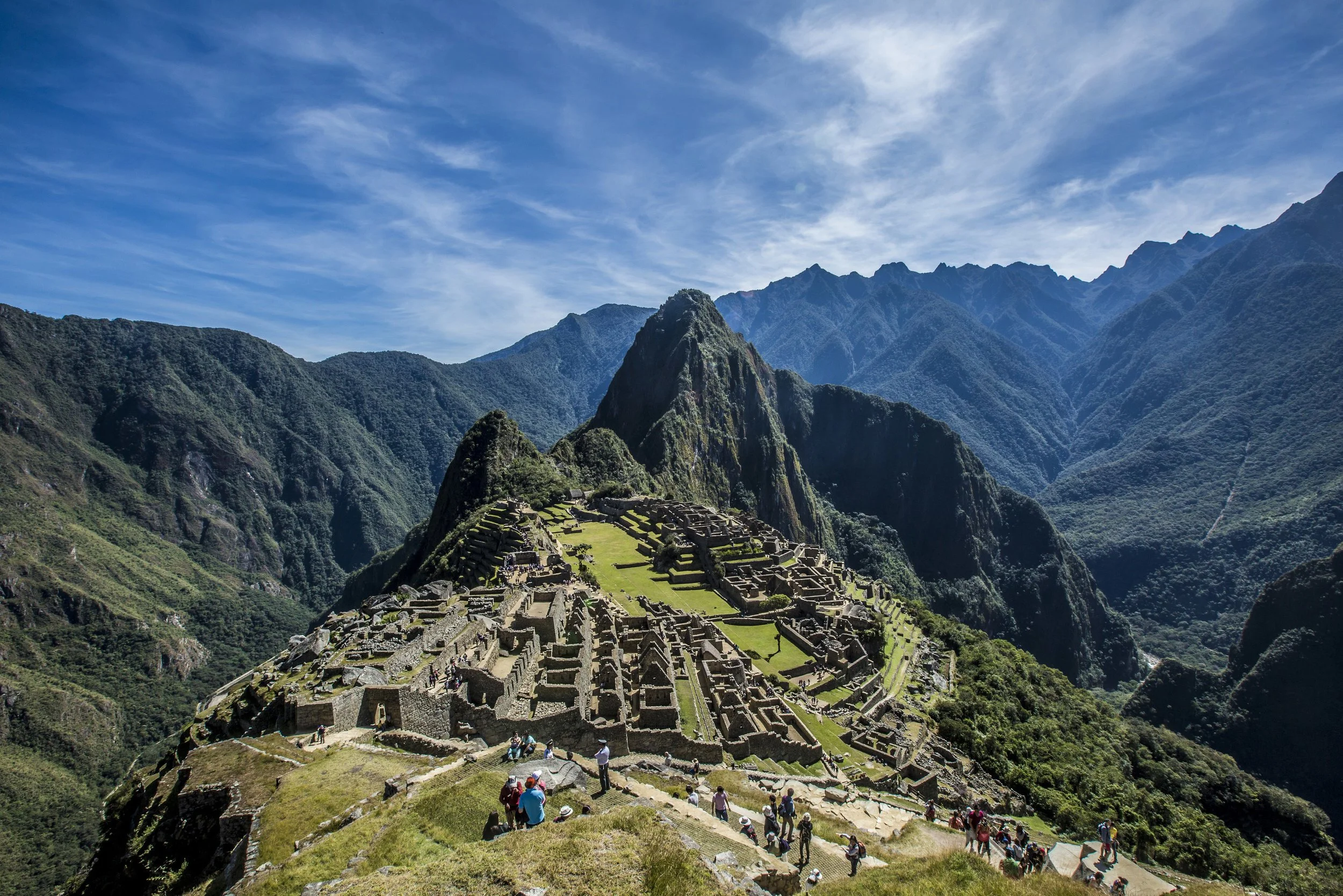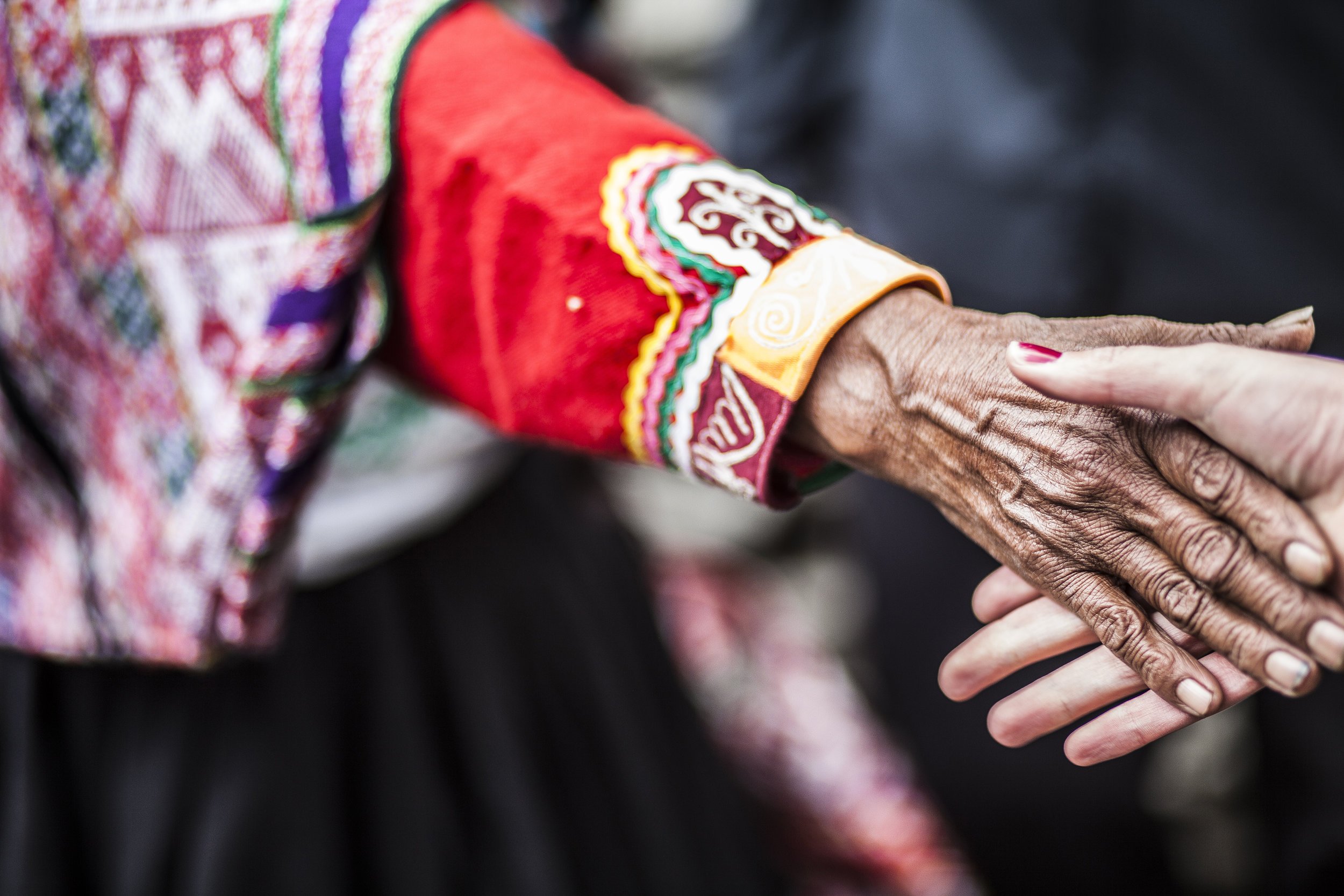The peru trekking Travel Guide
Everything you need to know about trekking in Peru with Root Adventures!
You’re about to partake in an incredible adventure! Our Peru Trekking trip is truly unlike any other in the route that you’ll be taking, the views you’ll get to see, and the communities you’ll get to visit. Your exploration of the great outdoors will only be enhanced with mindfulness practices to lead you on an exploration of the great indoors, aka “the self”.
To get the most out of your journey it’s best to be prepared! We’ve laid out everything you need to know about traveling to Peru with us. We can’t wait!
The Weather
How should I dress?
September is one of the best times to visit the Sacred Valley in Peru, especially if you want to avoid the crows….and we do!
September is the start of spring and the last month of the dry season heading into the wet season. There is a slightly elevated chance of rain. Most days however, you’ll be soaking up the warmth of the sun!
The average temperature is usually in the upper 60’s F during the day and 40’s F and below during the night.
This means you’ll want to pack plenty of layers to keep cool during the day when you’re hiking and stay warm at night when you’re sleeping and you’ll definitely want some rain gear! Check out the packing list below.
The gear
What do I need to bring?
On the fourth day of this trip we’ll begin the trekking portion of the adventure!
Keep in mind that although this is a trekking trip, it is not a backpacking trip so you will not be carrying a large pack. Porters transport your luggage to each new overnight accommodation. You will carry a day pack (recommended with hydration bladder) to hold your needed gear from the day (sunscreen, water, camera, extra layers, etc.) for the day hikes.
You will need to provide your own hiking clothing, rain gear, day packs, and sturdy hiking footwear. We will provide everything that is needed for your camping experience including tents, sleeping bags and a thick camping mattresses.
You can find a detailed packing list here. We will also go over gear in much more detail on our two pre-trip calls.
Sustainability is one of our core-pillars, so we love to suggest sourcing gear from friends/family or second hand stores that sell lightly used gear! If you’re buying gear new, we recommend shopping locally or from small companies in whose mission you believe. Check the packing list for some of our favorites!
Preparing For Your Trek
How difficult is this really going to be?
Expect for this trek to be challenging! But with challenges comes great rewards like incredible views, the satisfaction of pushing yourself physically and mentally, and strong friendships formed.
We classify this trip a level 5 out of 5. This means that prior hiking experience is required. Expect long hikes, significant elevation gain, variable terrain and weather conditions.
We absolutely recommend preparing yourself physically before showing up for this adventure. It is recommended that you do practice hikes, walks, or strength and cardio conditioning to prepare. When you sign up you’ll receive a training plan.
Below are approximate daily mileages with elevation gain. What makes this trek particularly challenging is the elevation gain, as we will be hiking above 14,00ft at times!
Day 1-3
0km
Day 4
Trekking time: ~5 hours
Trekking distance: 6.5 miles
Altitude: Min. -10,698 ft. | Max. - 3,579 ft.
Day 5
Trekking time: ~8 hours
Trekking distance: 10 miles
Altitude: Min. - 3,921 km / 12,864 ft | Max.: 4,818 km / 15,808 ft
Day 6
Trekking time: ~7 hours
Trekking distance: 10.4 miles
Altitude: Min. - 2,585 km / 8,481 ft | Max. - 3,921 km / 12,864 ft
Day 7
Trekking time: ~5 hours
Trekking distance: 10.4 miles
Altitude: Min. - 2471 km / 8107 ft | Max. - 2808 km / 9213 ft
Day 8-9
0km
We know, you don’t want to be the last one or hold up the group…we hear this before every trip! However, please know that we consider our group to be a team, working together on each hike. This is an incredible opportunity to ask for help and support when perhaps in your daily life you’re always the one giving it.
Our local guides and Root Tour Leaders will be checking in with the group along the way and will be adjusting pacing as needed. Let’s do this thing together!
Accommodations
Where am i sleeping?
Sleeping accommodations are a combination of hotel stays and camping as detailed in the itinerary. All camping is double occupancy.
Our superior guides and support staff will provide a camping experience like no other. Upon arrival at the trailhead, you will feel supported in all areas. Our porters carry your bags to the campsite ahead of you, ensuring your campsite is set and ready for your arrival. Our spacious 3-person tents for 2 people and thick camping mattresses ensure you have a comfy sleep.
Each evening and morning you will enjoy a basin of hot water outside your tent to clean up and feel refreshed. We great you each morning with your choice of tea or coffee in your tent before you meet us in our dining tent equipped with tables and chairs for a hot breakfast. We also provide a private tent with a transportable toilet ensuring we leave no trace!
Do as the locals do
a crash course in the local culture of peru
It’s important at Root that when we travel we travel with an open mind and are respectful to the local ways, traditions, and customs. Keeping in mind that we are ambassadors of the US when we travel to foreign countries, it can be helpful to be prepared with some basic knowledge!
Language: Predominately Spanish with some variations, you’ll also hear indigenous dialects like Quechua, which is the second most common language spoken in Peru. Learning a few key phrases in Spanish can go a long way!
Currency: PEN - Peruvian Nueva Sol - also called Soles. Keep in mind that Root includes everything you need for your travels outside of alcohol, souvenirs and the occasional meal. Almost everyone will happily accept US Dollars, but if you would like to purchase gifts in the local currency we recommend using an ATM when you arrive (as opposed to getting cash before you arrive). Most credit cards will often be accepted, but there is a possibility for foreign fees or more remote locations that do not accept credit cards.
Greetings: Using formal titles like “Señor” or “Señora” is a form of respect, acknowledging the dignity of the person you're addressing.
Dress Code and Table Manners: You will of course see lots of traditional as well as modern fashion. But keep in mind that when you're stepping into religious sanctuaries or venturing into the rural heartlands, dressing modestly is highly valued. Additionally when you’re sitting down to eat, keeping your hands visible on the table is customary.
Photography: Photographs are a beautiful way to capture and remember incredible moments. But there are ways to be respectful about capturing these moments especially in a very deeply spiritual location such as Peru. Always seek permission before clicking, especially when your subject is an indigenous local. Additionally, approach religious, spiritual, and indigenous rituals with reverence and ask before capturing these moments on camera. We are there to immerse ourselves in the local culture, not make it a spectator sport!
Public Behavior: Peruvians value decorum, so excessively loud or boisterous behavior is not well-received.
No Trace Left Behind
Let’s Talk Poop
There’s no way around it. Yes, you’ll be going #1 (and possibly #2) in the great outdoors!
While your trekking there will be no access to showers or toilets. Your guides will show you how to practice “leave no trace” practices for elimination on trails and outdoors. Once you arrive at your overnight accommodations there is a portable toilet and hot water basins in the morning to freshen up, but a full shower will have to wait until Day 7!
We recommend purchasing a Kula Cloth and bringing along biodegradable wipes for “camp” showers, aka a quick wipe down.
Mindfulness
What if I’ve never meditated?
Have no fear! No prior meditation or mindfulness experience needed.
Nature is the ultimate teacher. Just getting out into the great outdoors has been proven to be incredibly beneficial for your mental and physical health.
Your Root Tour Leaders will provide you with simple and practical ways to keep your connection with nature, yourself, and your fellow travelers at the forefront of your experience.
But don’t worry, this won’t be a serious or quiet trip. At Root we see mindfulness as a way to participate in the ALIVENESS of life.
There will be moments you’ll be encouraged to observe silence, listen to nature, reflect on your internal experience or even possibly journal and share. And there will be many moments of raucous laughter, joyous storytelling, and playing in the dirt. Our trips have a little bit of everything!
To help you get the most out of your experience you will receive a pre-trip guide that has mindfulness and meditation practices, potential journaling prompts, and thoughtful ways to connect with nature throughout your adventure.
Final Tips
Anything else I need to know?
We’d love to impart some final words of wisdom for you here. These are tips and tricks we’ve learned over the years exploring, trekking, and guiding groups.
Pack light! The lighter the better. We cannot stress this enough! When packing ask yourself this question: “Do I absolutely need this?” If the answer is no, leave it behind.
Don’t wait to get your hiking boots! Purchase them well in advance of your hike and go for practice walks to wear them in.
Bring an extra Nalgene to use as extra heat at night. Boil some water, secure the lid on your Nalgene and pop it in the bottom of your sleeping bag for a toasty warm night.
There are definitely handy-dandy camp pillows, but you can also stuff your sleeping bag sack with clothes, jackets, etc that you brought with you for a makeshift pillow.
Tell your guides if you have a “hot spot” forming on your feet while hiking. They can help! Hot spots are red tender areas that appear before blisters form. The keyword here is before! Telling your guide early can help prevent blisters from forming.
A word about luggage. If possible, pack so that you can bring everything in a carry-on. That way if your luggage gets lost (knock on wood) you won’t be trying to piece gear together or purchase lots of expensive items last minute. If you are checking luggage then we recommend wearing your hiking boots and packing hiking essentials in your carry-on just in case!









